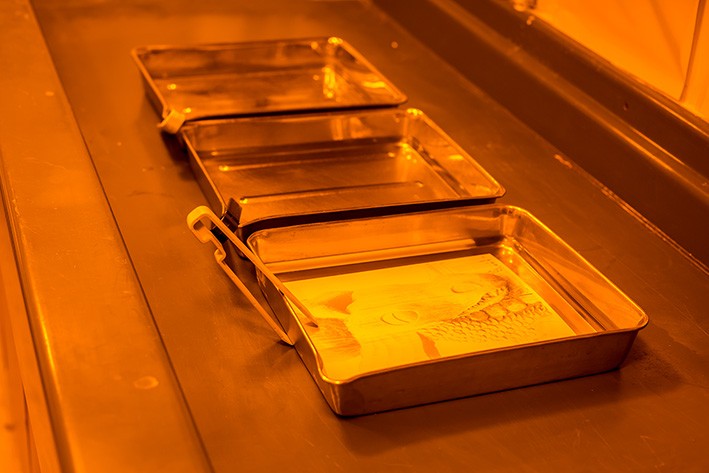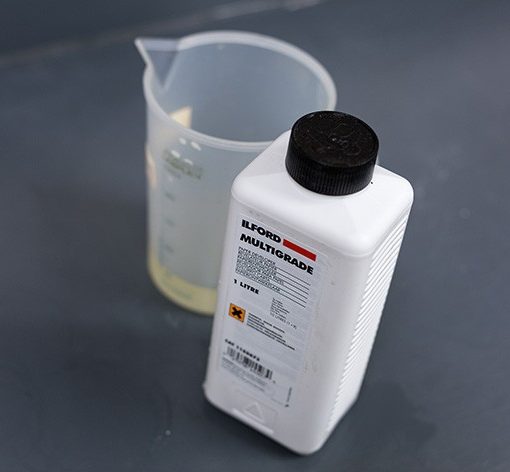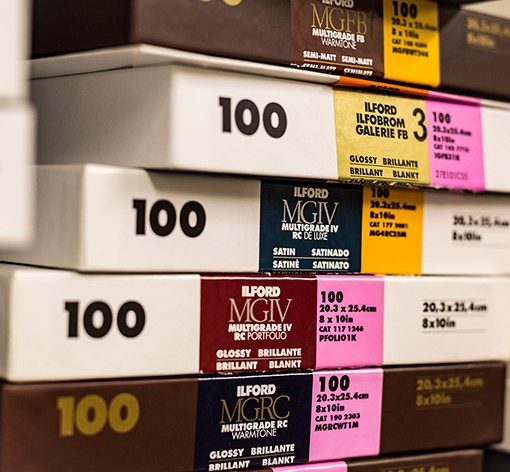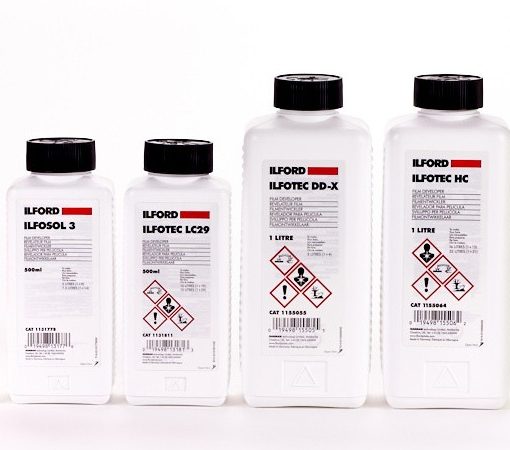One of the best things about film photography is that the creative process doesn’t end in the camera. Processing your images in a darkroom is not only great fun, but it also allows you to exercise complete creative control over the final look of your image.
We cover some of the essentials needed to set up a darkroom in our beginner’s guide and have also developed a series of short animations which cover essential darkroom equipment, darkroom safety tips as well as how an enlarger works.
Below, we cover which paper, chemistry and equipment we would recommend to get you started. Once you are set up download our illustrated guide (PDF) on how to make your first print.
PAPER
For a beginner, the most appropriate choice would be to use a glossy resin coated paper such as MULTIGRADE IV RC DELUXE as these are robust, easy to handle and more forgiving to errors.
To obtain a full grade range when using MULTIGRADE (variable contrast) papers, a MULTIGRADE FILTER set is also required. These are available as below or above the lens kits.
If the enlarger being used has a colour head then contrast can be obtained by using its filtration values and a filter kit is not required.
EQUIPMENT
We would recommend the following equipment to get you started.
- 3 medium size plastic or metal trays. (10×8″ trays are ideal to get started).
- 3 medium size plastic or glass measuring jugs (ideally, they need to measure from 10ml to 1L)
- Thermometer
- Timer
- Chemistry as detailed below
- Stirring spoon (plastic or metal – with a long handle)
- Squeegee
- Pegs for hanging the paper to dry (or blotting paper/cotton material which prints can lay on)
We would also advise protective gloves/glasses/clothing.
Access to a sink/running water is also required although this does not need to be in the darkroom.
CHEMISTRY
We offer a range of photo chemistry from paper and film developers to stop bath, fixers, washaid and toners. To process paper you will only need a paper developer, stop bath and fixer.
For our recommendations on which chemistry to use and how to prepare them please read our Beginner’s Guide to Choosing Chemistry for Printing or our introduction to the various different paper developers.
When preparing chemistry to working strength dilutions, protective clothing such as glasses and gloves should be worn. It is also important to avoid cross contamination of the chemicals as this can cause staining on prints and can reduce their effectiveness. Wash your hands and measuring cylinders between use’s and use a different pair of tongs for each tray.
For a beginner, the simplest chemicals to start with are MULTIGRADE DEVELOPER, ILFOSTOP and RAPID FIXER.
PRINTING
Once the trays of developer, stop bath and fixer have been prepared it is time to start exposing the paper in an enlarger. This is the first stage of the printing process.



